Situated on top of Sanguttara Hill, the 99 meter high Shwedagon Pagoda is the crown jewel of Yangon and the most sacred Buddhist Pagoda in Myanmar. The Pagoda that is rumoured to be more than 2,600 years old is said to be the oldest Buddhist stupa in the world.

We had three days in Yangon and we decided to spend both a late afternoon and morning at Yangon’s number one tourist attraction so we can photograph the site with different lighting conditions.
Having first had lunch at one of Lonely Planets recommendations Nilar Biryani & Cold Drink which serves up cheap tasty Indian delights, we took a taxi for 4000 kyat from Yangon down-town and it dropped us at the Pagoda’s south eastern elevator entrance. The entrance fee is 8000 kyat(around US$8) and you leave your shoes in the lockers provided, another good reason to go in the cooler parts of the day unless you want to scald your feet on the marbled floor main terrace! An elevator took us to the level of the Pagoda and when you emerge on to the marble-floored main terrace, you will be dazzled by the glitter and gold of the central stupa and the cluttered terrace littered with smaller stupas, pavilions and worship halls containing Buddha images.

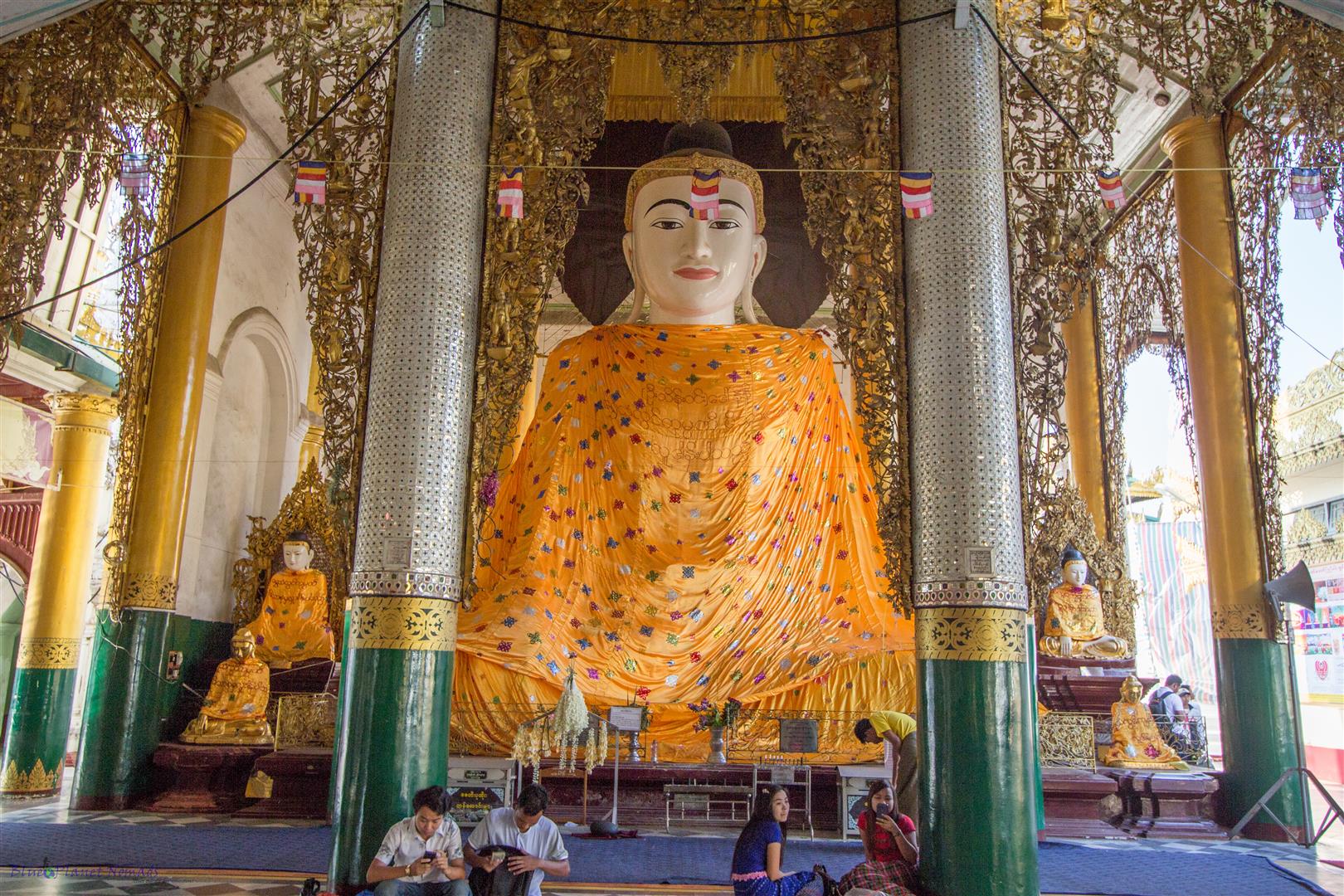
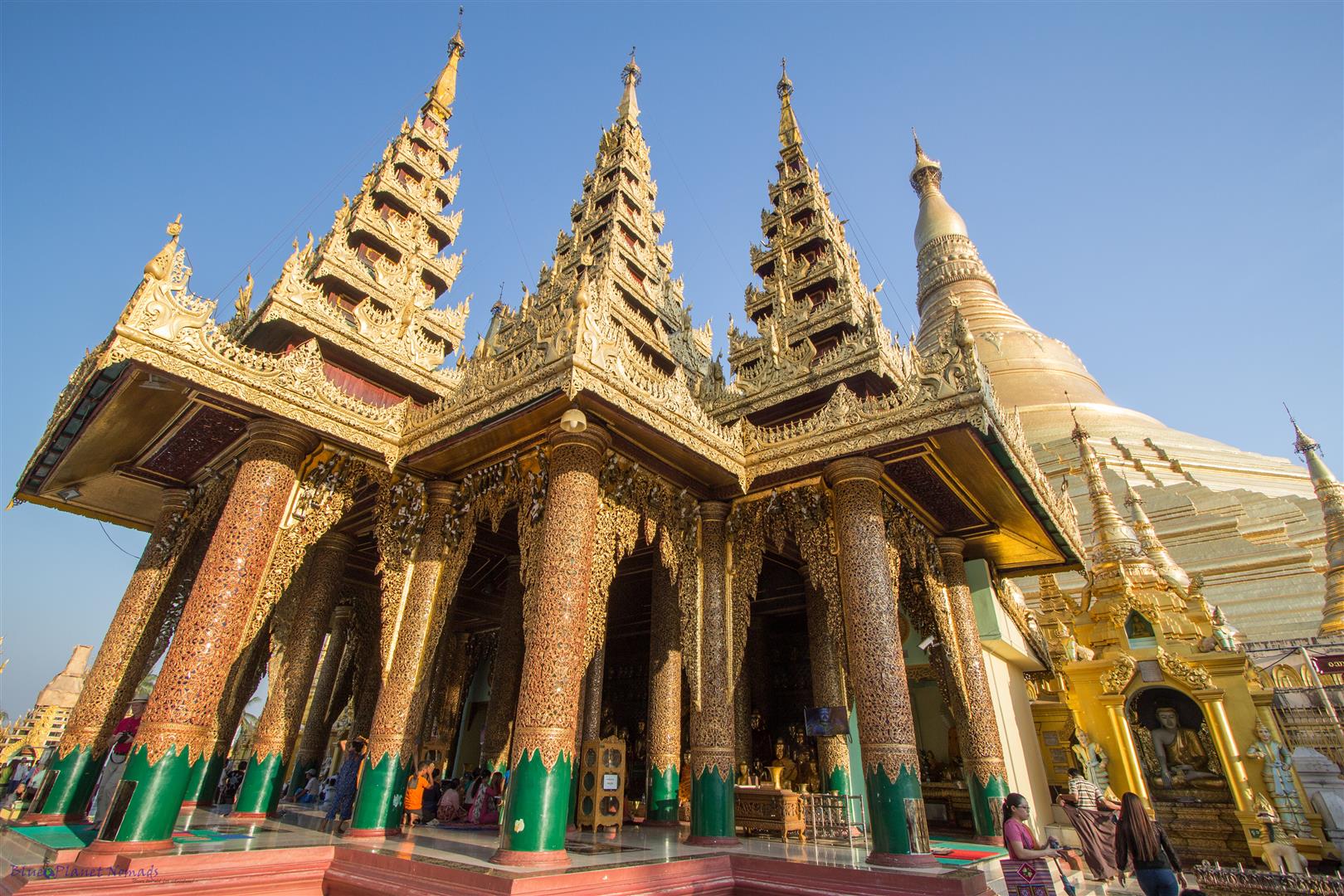
The Pagoda was busy and it’s fair to say that locals will easily outnumber you by at least 100 to 1. When entering the Pagoda it is customary to circumnavigate the Buddhist stupas in a clockwise direction so clockwise we walked!

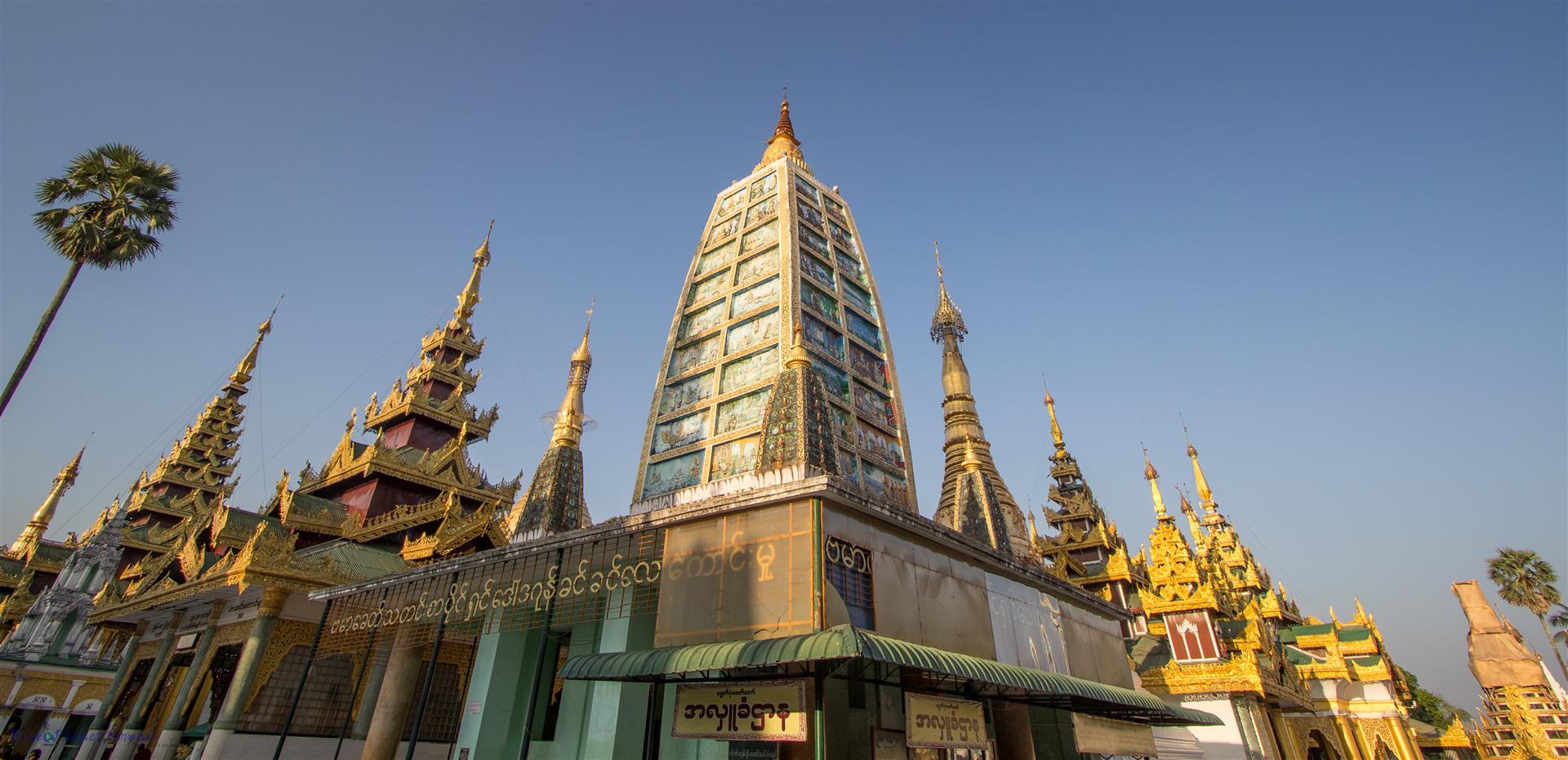
Standing 100 meters (125ft) tall and covered with 27 metric tonnes of gold leaf, the central zedi is said to contain 8 of the hairs of Gautama Buddha enshrined in a temple of gold as well as relics of three former Buddha’s. From this base, the zedi rises first in three terraces, then in ‘octagonal’ terraces and then in five circular bands. The shoulder of the bell is decorated with 16 ‘flowers’. The bell is topped by the ‘inverted alms bowl’, another traditional element of stupa architecture, and above this stand the mouldings, then the ‘lotus petals’ rising up to the Banana bud. The umbrella a typical feature you see on all Burmese temples is tipped with 5,448 diamonds and 2,317 rubies. Immediately before the diamond bud is a flag-shaped vane. The very top “the diamond bud” is tipped with a 76 carat (15 g) diamond. WOW! its fair to say this is one priceless stupa 🙂


Smaller stupas sit on the raised platform level – four large ones mark the four cardinal directions, four medium-sized ones mark the four corners of the plinth and 60 small ones run around the perimeter. Over the course of the centuries the temple has been rebuilt several times having suffered damage from earthquakes and cyclones.


Around the stupa’s base, 12 planetary posts conform to the days of the week; locals pray at the station that represents the day they were born. We observed this ritual, we watched the locals praying to their respective birth corners, taking water in a cup and pouring it over the head of the Buddha. I was ready to do the same in the Sunday corner and Vaughan in the Saturday but working your way through the crowd required a little effort and we were too tired for that.
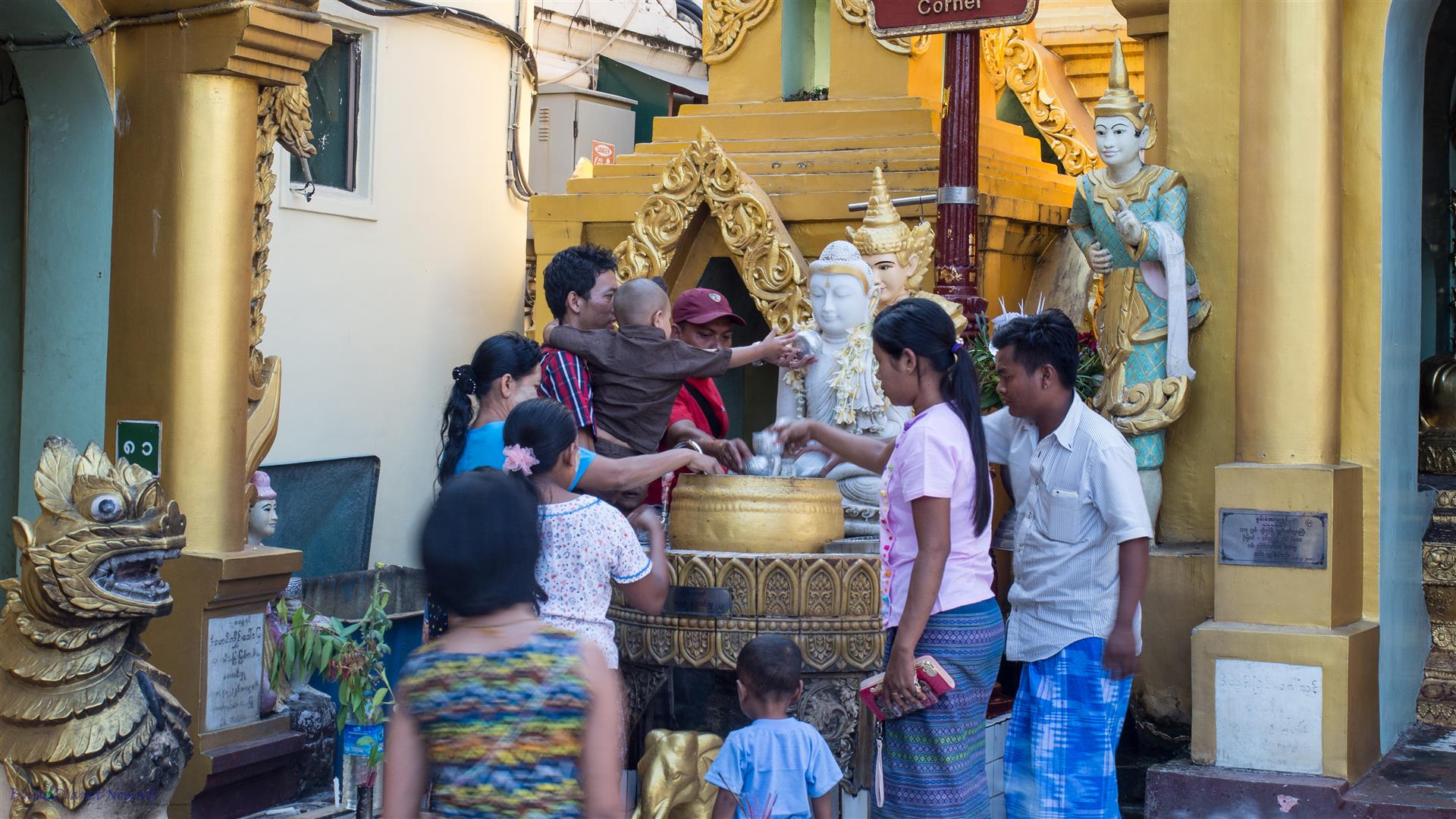
As we slowly made our way around we suddenly became drawn to a mass line up of locals with witches brooms. We stopped to see what the occasion was and with the instruction of a leader the group started forward, sweeping as they went trying to keep in sync. We moved out the way before we were swept up! We couldn’t quite work out whether this was some sort of ritual or routine to keep the temple clean, we guessed it was the latter.

The temple wasn’t just a place to marvel at amazing Buddhist architecture and relics it was also a place to watch locals. The Pagoda plays host to many rituals and festivals, as well as observing locals praying we saw small groups dressed in traditional dress and wondered what sort of custom they were observing. Perhaps a guide would have been handy to explain a few things.



A small museum occupies the northwest side of the temple. It’s home to religious items, some very interesting works of art and a photo gallery. There were photos showing the pagoda as it was in the late 1800’s, during the occupation of the British and various stages of it being rebuilt after the earthquakes. One photo caught our attention, it was a close up of the umbrella showing the intricate detail with its small gold bells and jewels.

We were going to wait until sunset as this is a good time to see the temple change colours and light up but sore feet and jetlag fatigue got the better of us so we headed back to the hotel.
On our second visit the following morning the taxi dropped us off outside of Kyay Thone Pagoda temple close to the east entrance where a pair of large leogryph’s guard the walkway entrance which leads up to the Pagoda Terrace. Before climbing the steps to Shwedagon we decided to take a look at Kyay Thone Pagoda.
The temple which is not really publicized in the likes of Lonely Planet is a little different from your typical Burmese temple, its architecture has more of a Chinese style. After dropping a 1000 kyat donation in the box and removed our shoes we headed across the bridge which spans a small lake filled with Koi fish which locals enjoyed feeding. Inside the main temple is a large Buddha with many smaller ones around it. There are many artefacts dotted around including a cabinet displaying old money which caught Vaughan’s attention. Smaller temples are connected by Islands.


The road leading to the east entrance is narrow and busy with locals and market stalls. As we fumbled our way through the crowds we were greeted by kids offering us plastic bags, we had no idea why and politely declined as we thought they wanted money. Looking around at other locals we then realised why plastic bags were handed out, they were to put your shoes in so you could carry them with you, which is a good idea if you don’t want to pay for shoe stowage or decide to leave through a different entrance. We were happy to pay the 2000 kyat and stow our shoes.

We climbed up the steps past the plethora of stalls selling Buddha trinkets, flowers, gold leaf, incense sticks and more and emerge to a very busy temple terrace, much more busy than the previous day.

After paying another 8000 kyat entrance fee we joined the crowds circling the temple. We spent some time taking photos, this time paying more attention to the intricate decorative detail carved into the temple architecture. Woven patterns of leaf designs, flowers and carved miniature figurines are just some of the details that provide the beautiful finishing touches to the temple architecture.
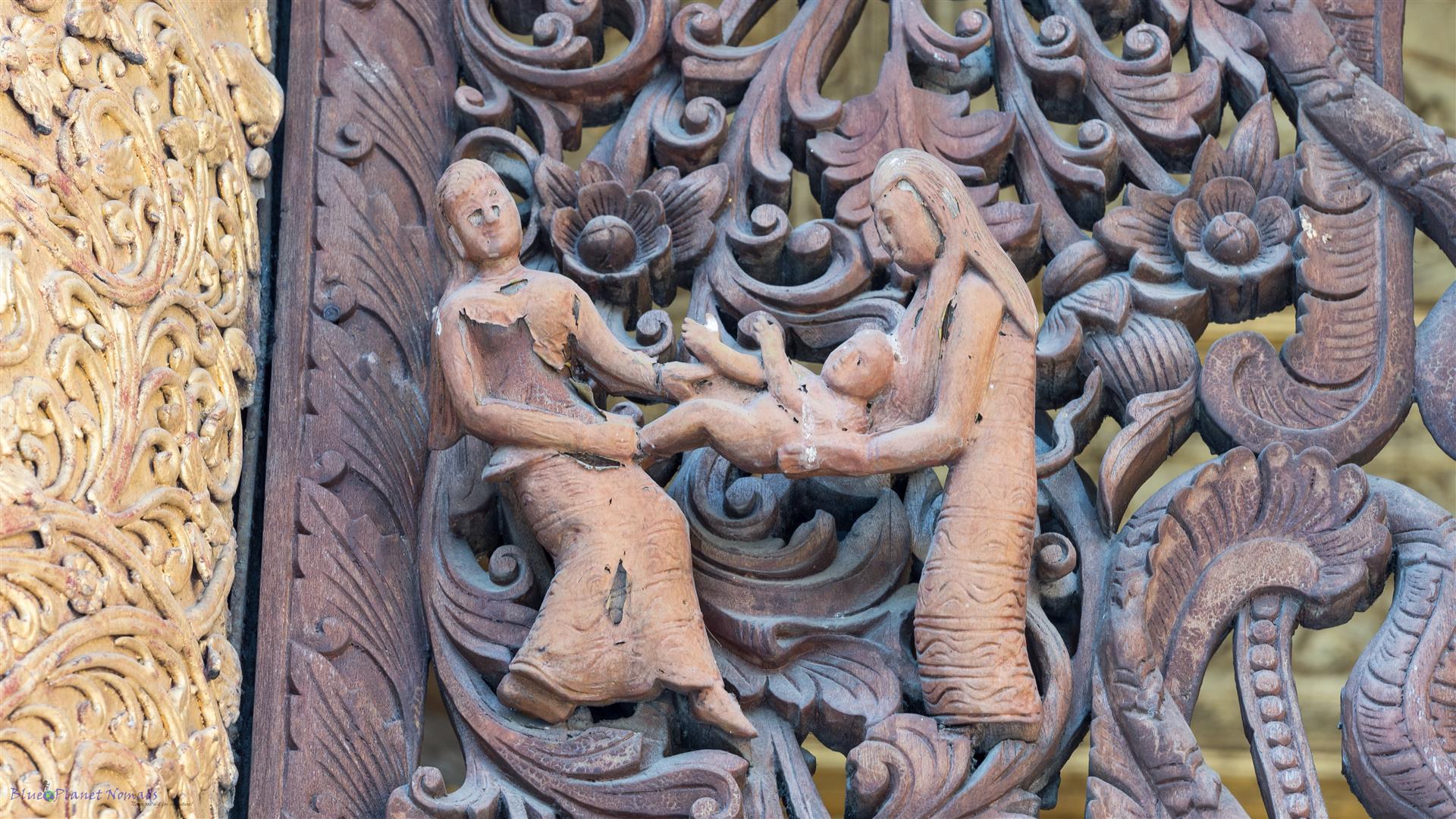


We decided to take a break a sought out a shady spot. A young local woman came and sat next to me and struck up a conversation. She told me she was learning English and asked if she could practice with me. For the next 45 minutes we chatted, she asked questions, I answered and vice versa. I even got out my note pad and explained some things as pictures do paint a 1000 words. She was very grateful for the practice session and I was pleased to have the opportunity to have a conversation with a local and assist in improving her English skills. So a second trip to the temple was worthwhile, even more so when I found my cap that I thought I had lost the day before. It was where I had left it, on the bench I sat at yesterday!


Having seen enough we headed back down the east entrance picking up our shoes along the way then caught a taxi for 3000 kyat to Chaukhtatgyi Paya a 65 meter reclining Buddha housed in a large metal-roofed shed. The admission is free but they do charge 500 kyat for use of your camera. The Buddha is one of Myanmar’s most revered reclining Buddha’s and its crown is encrusted with diamonds and other precious stones. Chaukhtatgyi Paya is a little off the radar and not really promoted so apart from the odd tour bus and a few locals you pretty much have the place to yourself.

The Buddha’s feet is inscribed in gold and describes the many lives of Buddha. A raised platform is located at the end of the shed by the Buddha’s feet and enables you to capture the whole length of the Buddha with your camera.

As we walked the length of the Buddha we observed locals praying and burning incense. It is worth walking around the whole shed, not only to view the Buddha from front to back but there are some other interesting deity statues and paintings to look at.
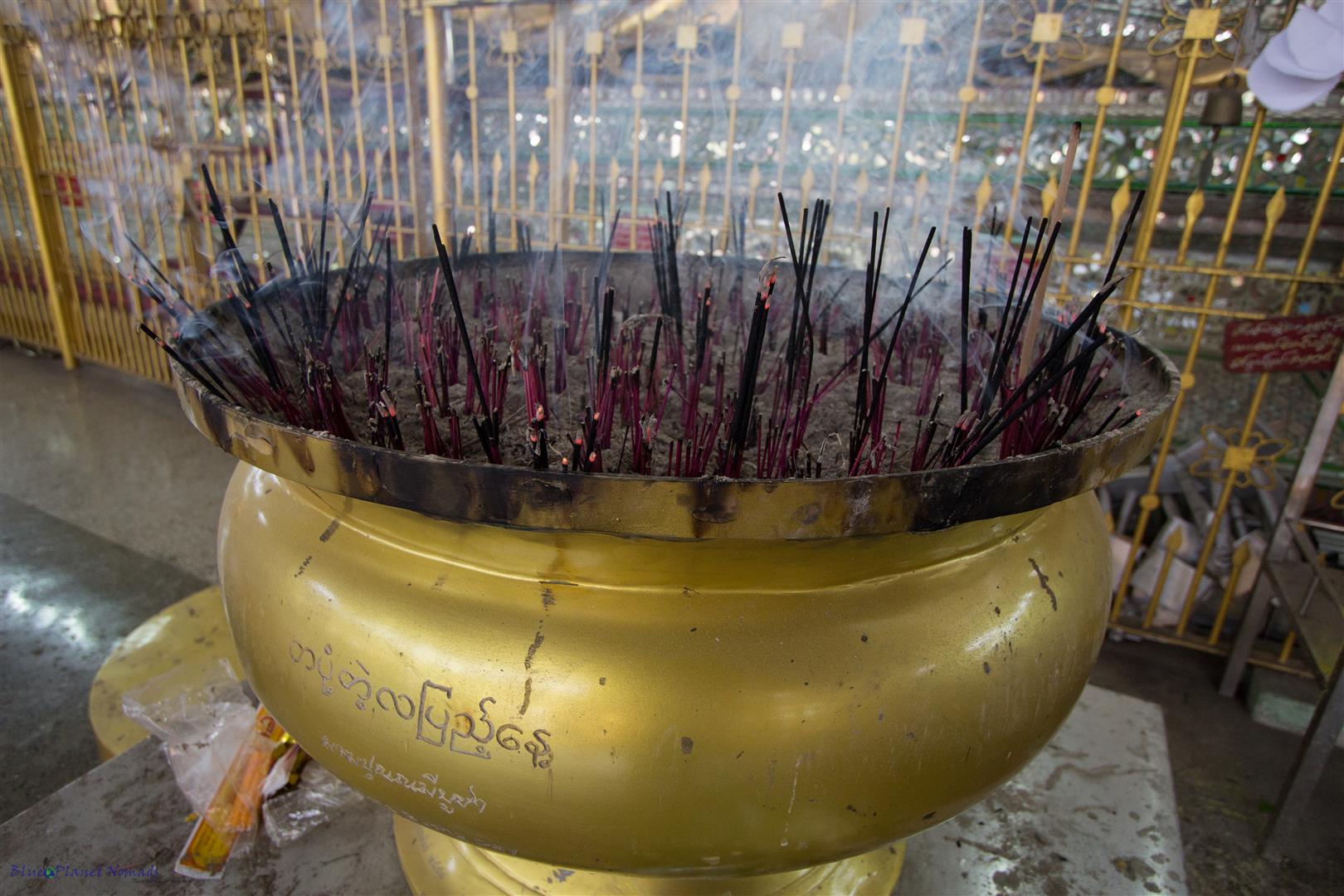

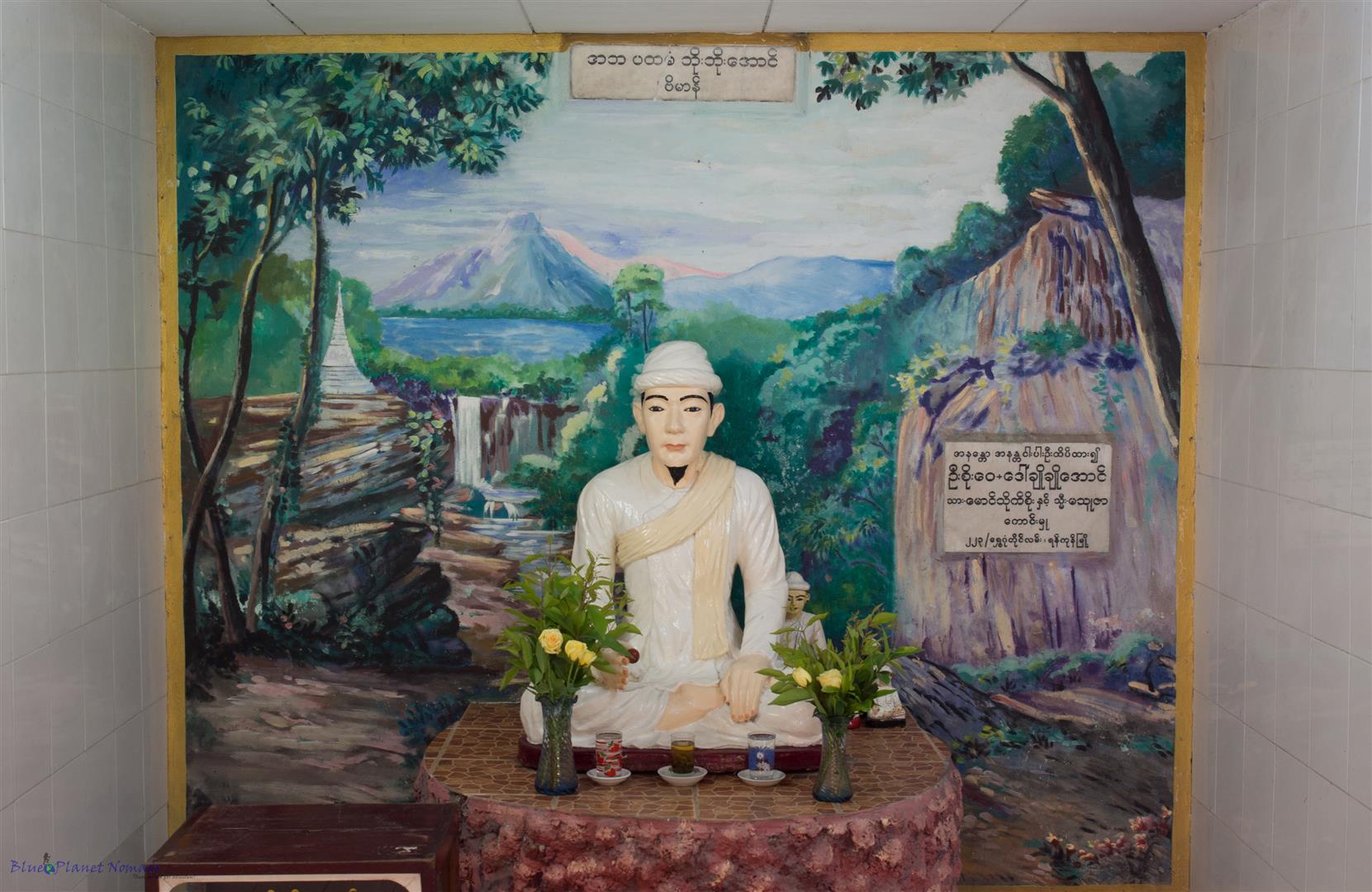
We spent about 15 to 20 minutes checking out the reclining Buddha, it is in our opinion worth the taxi ride and if you can combine it with your visit to Shwedagon then that is the best way to see it.
Some Facts..
Shwedagon Pagoda
Getting there: Depending where you are staying, Shwedagon Pagoda is about a 10 minute taxi ride from the city centre and will cost anywhere between 3000 and 4000 kyat depending on the taxi!
Best Time to go: Early morning or late afternoon into sunset when its cooler and the lighting is best for photos
Dress Code: Dress conservatively, tea shirts or long shirts, long pants or Lyongi. Shoes and socks are not allowed to be worn in the temple. This applies to all temples and religious monuments in Myanmar
If you want to see Kyay Thone Pagoda then ask to be dropped off at the East Entrance.
The reclining Buddha is about a 10 minute taxi ride from Shwedagon and cost us 3000 kyat
Visited: March 2016
If you have enjoyed the photos and would like to see more! then the complete gallery can be viewed in the Trip Photos






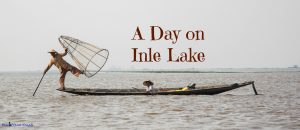
2600 years old!! Wow! It’s amazing to think about that compared to how old the US is. Love the photos, especially the groups in traditional dress. Beautiful colors. I’m learning to love the Buddhas since I did the interview with Natalie on her Buddha photography series.
Thanks Rebecca 🙂 it was amazing so captivating and so much gold!